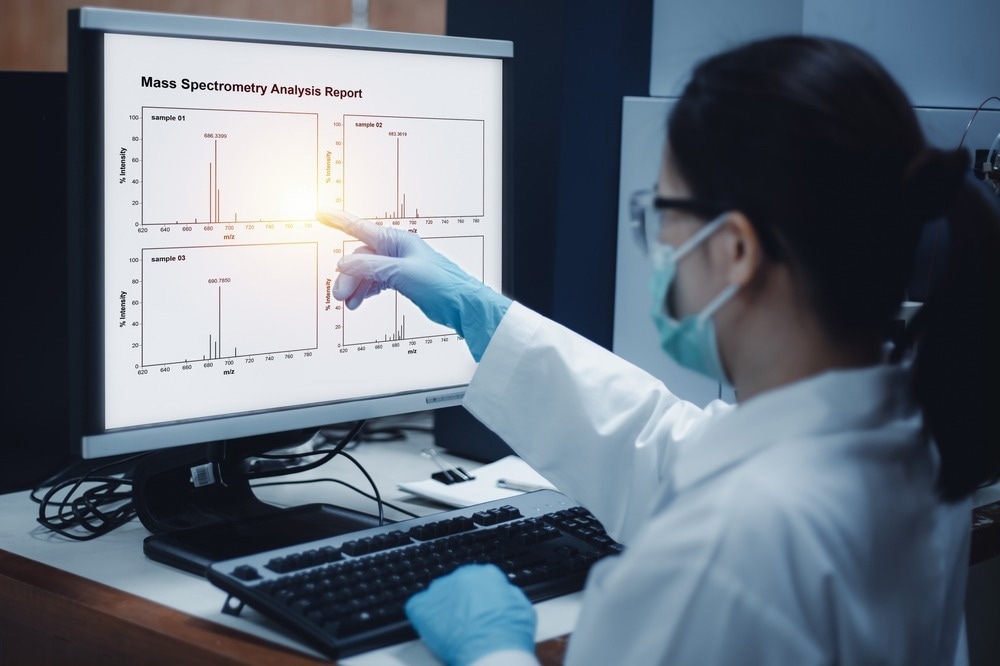Mass spectrometry (MS) stands as an invaluable analytical tool for high-throughput screening owing to its rapidity, exceptional resolution, and sensitivity.

Image Credit: S. Singha/Shutterstock.com
Recently, scientists at the Qingdao Institute of Bioenergy and Bioprocess Technology (QIBEBT) of the Chinese Academy of Sciences (CAS) engineered an in-situ screening platform for fatty acid-producing strains using a high-throughput MS system.
The observations were published in the journal Talanta on October 4, 2023.
The platform employs laser ablation electrospray ionization mass spectrometry (LAESI-MS) to directly profile triglyceride (TAG) species within cellular lipid droplets of Aurantiochytrium sp. Within the MS setup, the ionization source combines a high-energy laser module with an electrospray module.
The laser module ablates colony cells and desorbs molecules from cellular lipid droplets, creating molecular plumes. Subsequently, the electrospray module ionizes these molecular plumes originating from laser ablation.
Within the platform's workflow, the laser source is meticulously targeted at an individual colony on the agar plate. The laser's energy ablates and desorbs the colony cells, creating a molecular plume. This plume is then ionized by the electrospray, transforming the molecules into ions. Eventually, the resulting ions undergo analysis using a mass spectrometer.
This MS platform allows rapid, extremely effective sampling and ionization of TAG molecules. The distribution of fatty acids is measured by TAG strengths in cellular lipid droplets of colonies on agar plates. Remarkably, it has recognized a fast-sampling rate of ≤2 s per sampling point and ≤13.69% relative standard deviation (RSDs) of the relative contents of fatty acids.
The MS platform has been used to analyze strains of Phaeodactylum tricornutum and Yarrowia lipolytica, indicating its effectiveness for high-throughput screening in the field of fatty acid bio-manufacturing.
Journal Reference
Liu, H., et al. (2023). A high-throughput platform enables in situ screening of fatty acid-producing strains using laser ablation electrospray ionization mass spectrometry and a Python package. Science Direct. doi.org/10.1016/j.talanta.2023.125234